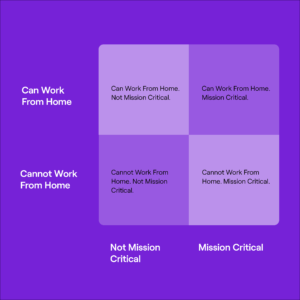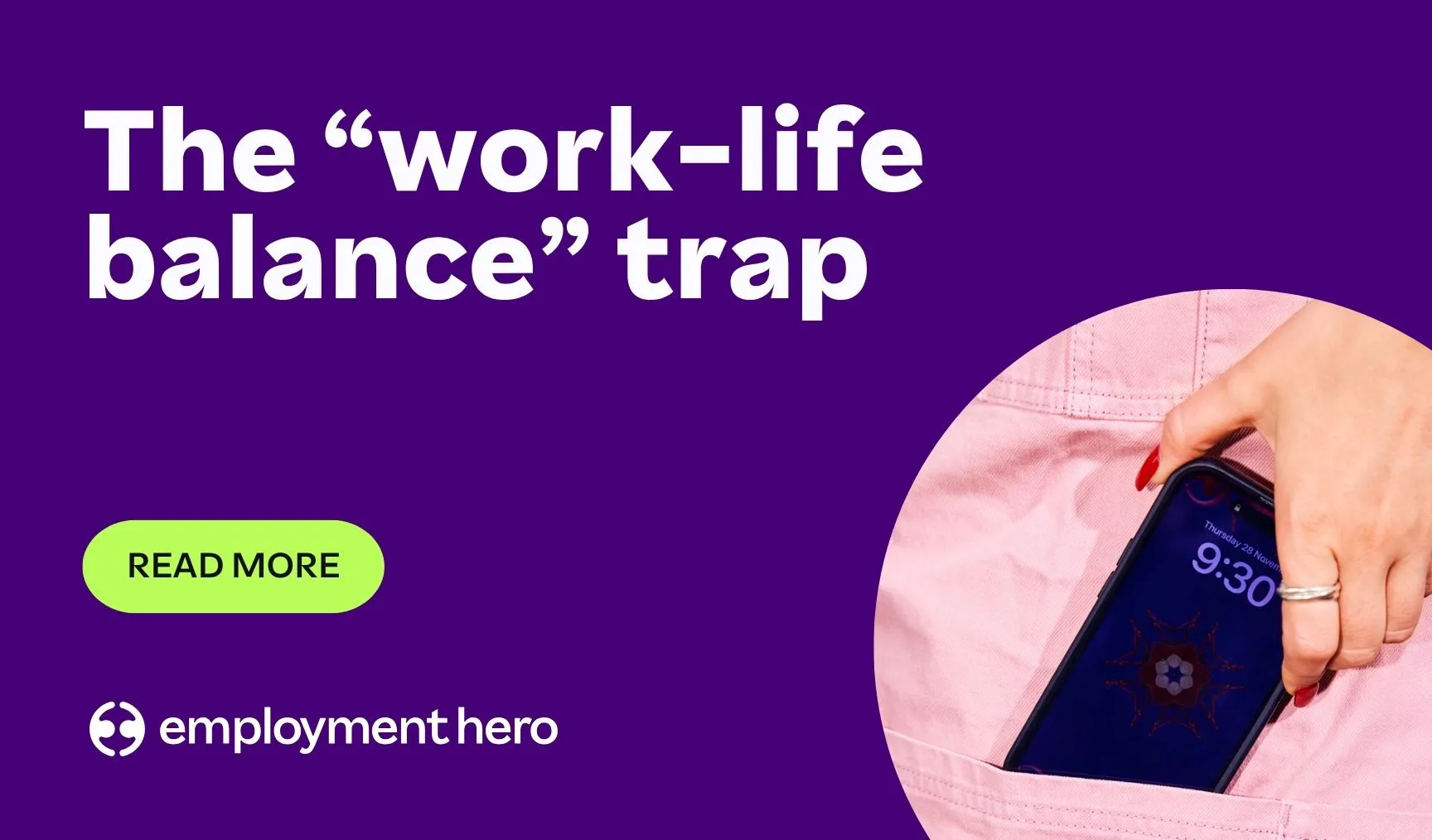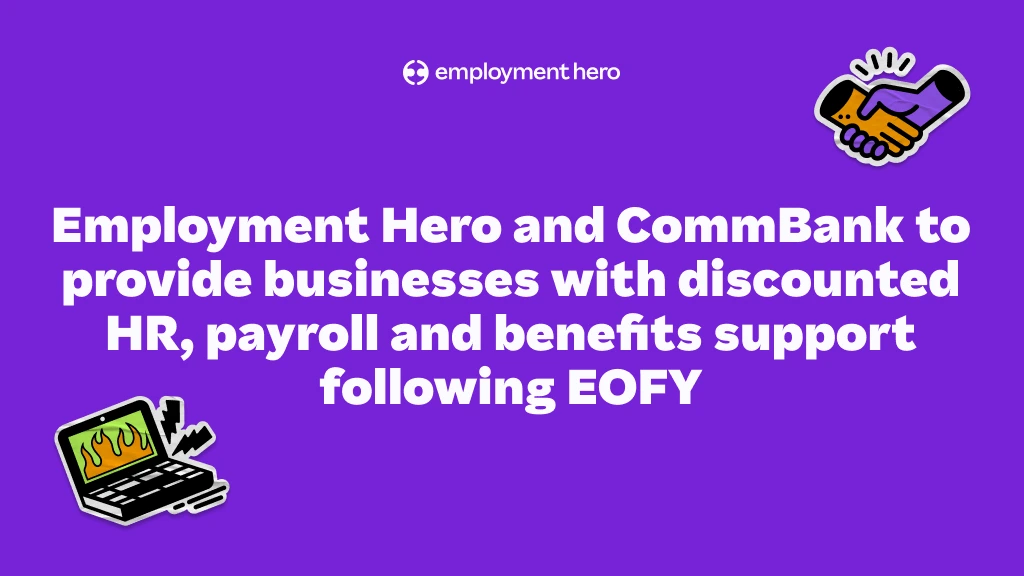5 Steps to a return to work plan post COVID-19
The return to work after a global pandemic time around is going to look a little different to your average post Christmas break return. It’s going to involve strict hygiene measures, social distancing, lots of planning and a myriad of other processes to help keep your team safe.

Contents
As restrictions continue to ease around the world, teams are beginning to plan their return to work. From the logistics right through to cleaning and sanitisation of common areas, there are many aspects to keep in mind when planning the return of your workforce.
Workforce planning is extremely important as it can minimise the risk of infection in your organisation. Before we get started, it’s important to know that this is not the normal return to work after the Christmas break. This is a planned and sensible approach to keeping your team safe.
So how can you safely prepare for your team’s return to work? Read on as we suggest some ways you can begin planning your workforce return below.
If you’re looking for more information on planning your team’s return to work and how to keep your team safe, you read our helpful articles here:
- Unpaid leave employee agreement template
- Effects of COVID and mental health at work
- Temporarily reduced salary template
- Workforce vaccine sentiment report
Read more: 7 ways to stay connected in social isolation
1. Conduct a workforce audit
First, start with a workforce audit. Create a master list of all the staff and group them by teams. You’ll then assess whether they can continue to work from home or not. This might mean consulting team leaders and managers to determine which staff can successfully continue to work remotely or might need to come back to the workplace.
This is a case of identifying where your workforce has access to the tools needed to perform their job successfully. Whether that’s at home or on-site, the first step is grouping teams and employees together. This step may involve looking into alternative working arrangements such as a remote-first approach.
A remote-first workplace is a concept that deep work is to be completed at home and the workplace is used as a place for collaboration and socialising. We understand the return to work isn’t a one size fits all approach. How do we know this? We recently surveyed 1200 employees to gain insights into their attitudes towards remote working. We found that many of us are missing the camaraderie of our peers, however, 84% of employees are enjoying the benefits associated with working from home.
Related: HR audit checklist for businesses

Pro tip: Plot your workforce on a graph like this. It’ll help you visualise which staff can and cannot work effectively from home, as well as who is business critical. An example of someone who is business critical would be whoever processes your payroll!
2. Consult the team
After you’ve conducted a workforce audit you should then consult the wider team. This ensures everyone feels heard and boundaries can be respected. Depending on the size of your business, a survey could be a really effective way to get a sense of where employees’ attitudes are about a return to the office.
Pro tip: Did you know that you can survey your team with Employment Hero’s Custom Survey Feature? You’ll be able to gain insight into how your team is really feeling towards their return.
If you’d like to learn more about how Employment Hero can assist with managing your team, get in touch with one of our small business specialists today.
For tips on re-establishing a routine after a disruption, our blog on Getting Back Into a Routine provides practical advice.
3. Create groups
For the team members who want or need to return to the office, it’s important to stagger their return by segmenting your workforce into groups.
Divide each team (E.g. support, marketing, sales) into two or more groups (depending on size) with an even distribution of seniority and capability if possible.
This will reduce the risks associated with a COVID-19 outbreak in the office as your entire workforce will not be together.
4. Create rosters
Once you’ve organised your return to work groups you’ll want to roster them on alternative weeks.
This will mean that in the event of an employee contracting COVID-19, you still have a ‘safe’ group of employees with similar capabilities.
You can also stagger the start and finish times of your team to minimise their risk during peak times on public transport.
5. Communicate with your team
Before you reopen your workplace or start allowing more staff to return, you must communicate clearly and firmly the expectations of the business.
The first thing to do would be to provide each team lead or manager with the workforce planning rosters you have organised.
They should then share these with their team so that everyone knows when they should or shouldn’t be coming into the workplace.
Why is it so important to invest in planning your workforce to return to work?
At the end of the day, it’s your top priority to keep your team safe. Let’s consider two scenarios:
Scenario one: everyone returns to the office at the same time
Let’s say you allow your team to come back to the office without any restrictions. Imagine if just one team member contracts COVID-19 and brings it to work with them. They’ve now infected an unknown amount of people.
You’ll have to try and work out who was in the office at the same time as them and who may be at risk.
You might also have a situation in which your whole support team is now sick and unable to work.
What a nightmare!
Scenario two: you control who comes back into the office and when
In this scenario, you work with each team lead/manager to create return-to-work cohorts who work in the office on a rotating roster basis. This means that in the event that there is an outbreak, the worst case is that only half of your support team is ill.
You’ll also have a record of everyone who should have been in the office and who was not. This can help you manage the situation at hand. As you can see, situation two is much preferable.
Although it does take more time and effort to organise, following the steps detailed above will help you reduce and control any outbreaks in the workplace.
Understanding the concept of social rust can also help. Read our blog on What is social rust and how to tackle it in the workplace to learn how to ease your team back into the office.
The wrap up
The return to work after a global pandemic time around is going to look a little different to your average post-Christmas break return. It’s going to involve strict hygiene measures, social distancing, lots of planning and a myriad of other processes to help keep your team safe.
In the process of planning your team’s return to work, you may find that a blended workforce or a remote-first approach is the way forward for your team.
With a little workforce planning, we will get through this together.
Related Resources
-
 Read more: The ‘work-life balance’ trap: Why promising it is hurting your SME recruitment (and what to promise instead)
Read more: The ‘work-life balance’ trap: Why promising it is hurting your SME recruitment (and what to promise instead)The ‘work-life balance’ trap: Why promising it is hurting your SME recruitment (and what to promise instead)
For growing SMEs, work-life integration is a sustainable way to support your team and attract top talent. Explore how your…
-
 Read more: Job ad guide: How to attract top candidates
Read more: Job ad guide: How to attract top candidatesJob ad guide: How to attract top candidates
Looking to hire your perfect match? The way you pitch your open role can be the difference between landing or…
-
 Read more: Employment Hero and CommBank to provide businesses with discounted HR, payroll and benefits support following EOFY
Read more: Employment Hero and CommBank to provide businesses with discounted HR, payroll and benefits support following EOFYEmployment Hero and CommBank to provide businesses with discounted HR, payroll and benefits support following EOFY
Eligible CommBank Yello for Business customers will get the first 3 months free on any Employment Operating System subscription with…





















